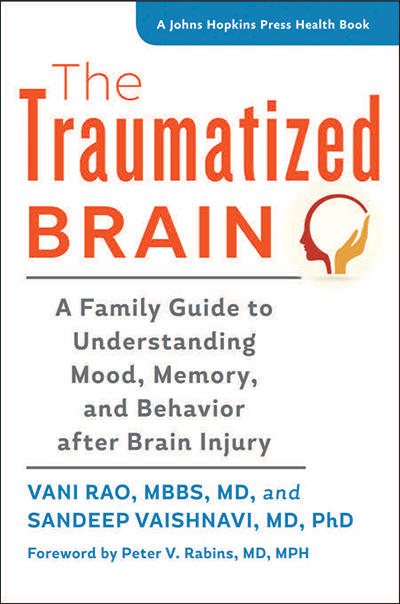 Medical Scientist Training Program alumnus Sandeep Vaishnavi, M.D., Ph.D.What do football players, military combat personnel, and victims of motor vehicle accidents have in common? All of them experience higher rates of traumatic brain injury, says Sandeep Vaishnavi, M.D. ’02, Ph.D. ’00. Since his days as a student in the School of Medicine’s Medical Scientist
Medical Scientist Training Program alumnus Sandeep Vaishnavi, M.D., Ph.D.What do football players, military combat personnel, and victims of motor vehicle accidents have in common? All of them experience higher rates of traumatic brain injury, says Sandeep Vaishnavi, M.D. ’02, Ph.D. ’00. Since his days as a student in the School of Medicine’s Medical Scientist
Training Program (MSTP), Vaishnavi has been studying this “silent epidemic.”
Now he splits his time working as a neuropsychiatrist at the Preston Robert Tisch Brain Tumor Center at Duke University School of Medicineand as the director of the neuropsychiatric clinic at Carolina Partners. Despite the demands of clinical research and patient care, he also writes regularly about traumatic brain injury.
To boost public understanding of the emotional and behavioral changes that traumatic brain injuries can cause, Vaishnavi co-authored The Traumatized Brain: A Family Guide to Understanding Mood,
Memory, and Behavior After Brain Injury, published by Johns Hopkins University Press in 2015. The book offers advice to TBI patients and their families about dealing with the myriad symptoms that can stem from TBI, from depression, anxiety, and mania to aggression, impulsivity, and sleep disturbance.
“Traumatic brain injury is really quite prevalent,” he says. “What I found fascinating was that a lot of people didn’t understand that these mood, behavioral, and cognitive problems are part and parcel of traumatic brain injury. Until recently, many in the public didn't realize that all these symptoms occur with it.”
Even a mild TBI, commonly known as a concussion, can cause changes in mood and behavior. Though mild injuries usually heal, with more serious injuries the changes can become part of the new normal. “Once the patient and family members understand that the neuropsychiatric symptoms are caused by the brain injury, I think a huge burden is lifted,” he says. “A lot of the time, the guilt goes away, which will hopefully lead to better management of the condition.”
 So far, his book has garnered quite a number of endorsements from experts in the field and in particular from the NFL players’ union medical director, Dr. Thom Mayor.
So far, his book has garnered quite a number of endorsements from experts in the field and in particular from the NFL players’ union medical director, Dr. Thom Mayor.
Vaishnavi’s interest in traumatic brain injury was born during his time at UAB in the MSTP. While pursuing a doctorate in cognitive science, he had to decide whether to continue his training in neurology or psychiatry, but he was frustrated by the differing approaches taken by each discipline.
“It’s all brain related, in my mind,” he says. “I find it kind of silly that neurology and psychiatry in general are so disparate in their approaches and they don’t really interact all that much, which is unusual because we’re talking about the same organ.” But he says that training in both fields uniquely prepared him to study the brain and TBI in particular. “The training really helps a person think like [both] a neurologist and a psychiatrist in a more holistic way,” he says.
His mentors at the time included figures such as Anjan Chatterjee, M.D., Franklin R. Amthor, Ph.D., and Frank M. Griffin Jr., M.D. “UAB had a very challenging program,” he says. “I’m really grateful that I got such a strong basis, because after UAB I went to [a residency at] Duke and subsequently [a fellowship at] Johns Hopkins, and I felt very prepared for those institutions.”
As for the future, there’s still quite a bit more to learn about traumatic brain injury. “I think that it’s a great example of where we can learn and understand how the brain works and how to protect the brain and really make a difference in terms of public health,” he says. —written by Clair McLafferty